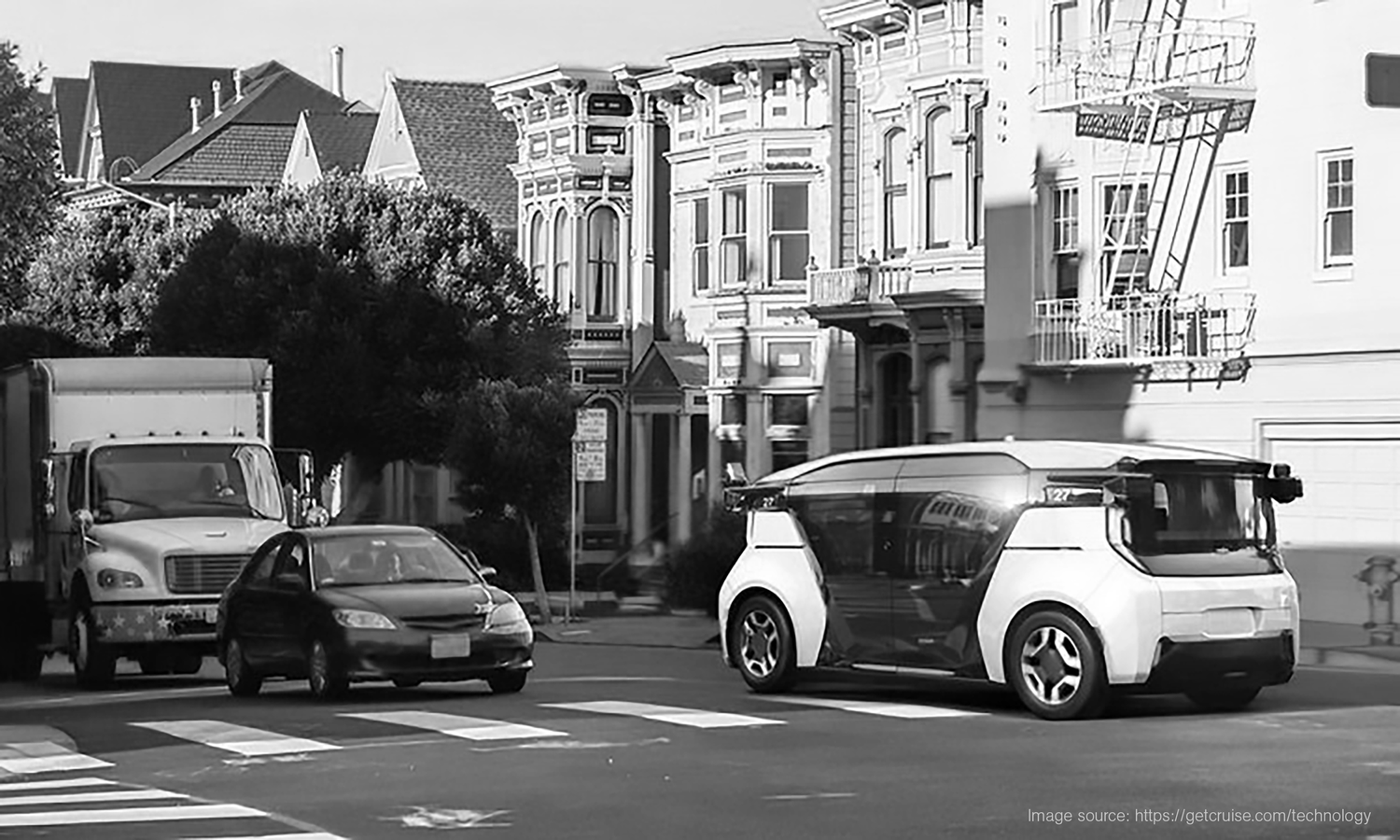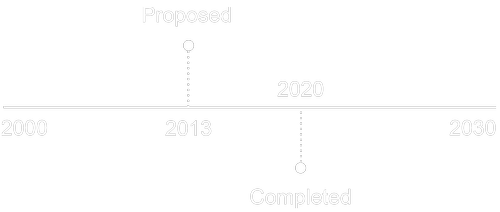
Location
San Francisco, California, USA

Stakeholders
General Motors, Honda, Microsoft, Walmart, San Francisco-Marin Foodbank, SF New Deal
Diverging from the conventional automobile design with a driver seat and steering wheel, Cruise Origin removes the steering wheel, mirrors, and pedals, allowing for an increase in cabin space. In addition to the expansion of passenger room, the removal of vehicle parts contribute to a longer vehicle life span of 1 million miles — a 6x boost from that of a typical car (Demaitre, E., 2020). The vehicle has large glass windows with sliding doors to prevent collisions with nearby vehicles, bicyclists, and pedestrians, and holds up to six passengers with cargo room beneath the wider-than-typical seats. In fact, Cruise Origin focuses on enhancing the rider experience while also reducing urban traffic congestion, improving vehicle safety, and limiting environmental impacts of transportation — all at a projected reduction in commuting cost by $5,000 per household annually (Demaitre, E., 2020). With an autonomous vehicle centered around the ride-sharing experience, Cruise Origin offers passengers the space to rest, socialize, or work. This reapproach of the moving vehicle could potentially introduce the mobile office as an alternative to traditional office buildings and in-office work.
The convenience of space and mobility provided by Cruise Origin in conjunction with the impacts of COVID-19 on company work settings could potentially disrupt the traditional office market and transform how and where people work. In fact, there is speculation on the value of a centralized office space and whether central business districts (CBDs) need to exist. Instead of requiring employees to physically come into the office, companies might shift to a hybrid or fully remote work orientation where employees can work inside the mobile office anywhere they go. In the case that the mobile office becomes the primary source of office space, there might be a decline in the use and need for traditional office buildings in urban areas. A fall in demand, therefore, would lower real estate costs in the central business districts or create new opportunities for former office building spaces, such as for housing.
Year

